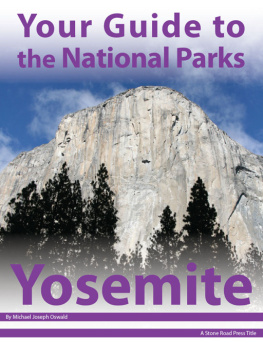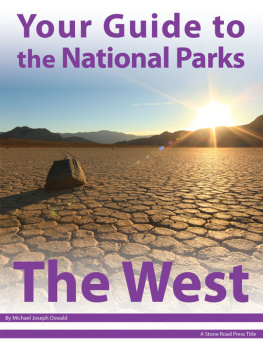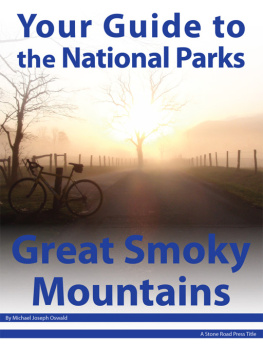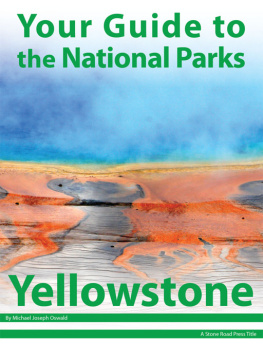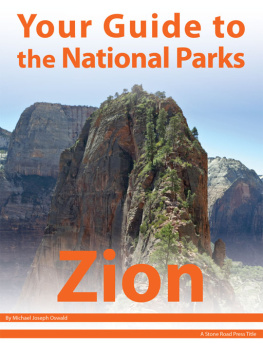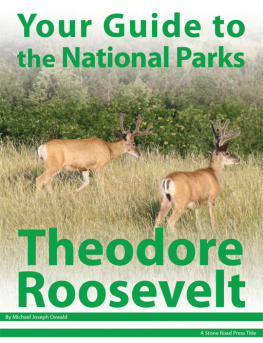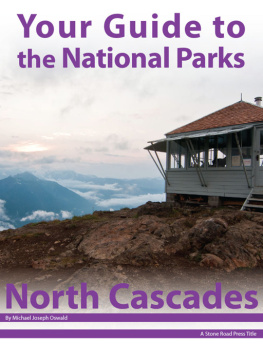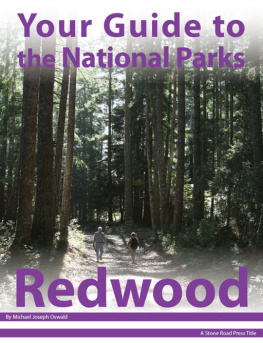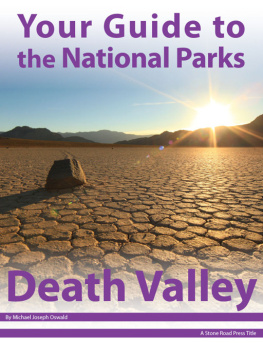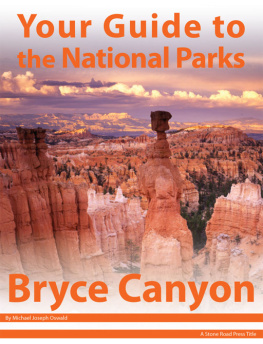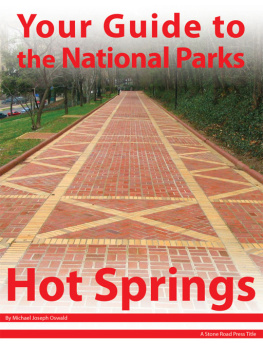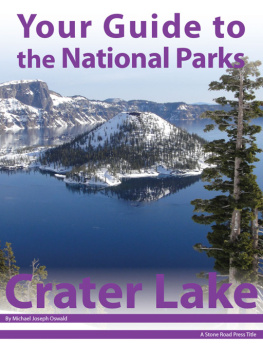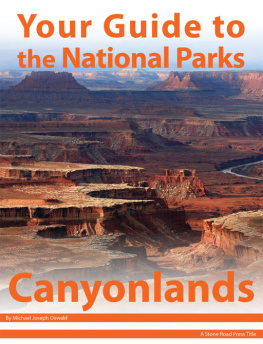Your Guide to Yosemite National Park, First Edition (electronic)
ISBN: 978-1-62128-039-2
Published by: Stone Road Press
Author/Cartographer/Photographer/Designer: Michael Joseph Oswald
Editor: Derek Pankratz
Copyright 2012 Stone Road Press, LLC, Whitelaw, Wisconsin. All rights reserved. No part of this publication may be reproduced, stored in a retrieval system or transmitted in any form or by any means, electronic, mechanical, photocopying, recording, scanning or otherwise without written permission of the Publisher. Requests for permission should be addressed to Stone Road Press; c/o Michael Oswald; 4927 Stone Road; Whitelaw, WI 54247.
The entire work, Your Guide to the National Parks is available in paperback and electronic versions. Content that appears in print may not be available electronically.
Paperback ISBN: 978-1-62128-000-2
Library of Congress Control Number (LCCN): 2012934277
Printed in the United States of America
E-Book ISBN: 978-1-62128-0 65-1
Corrections/Contact
This guide book has been researched and written with the greatest attention to detail in order to provide you with the most accurate and pertinent information. Unfortunately, travel informationespecially pricingis subject to change and inadvertent errors and omissions do occur. Should you encounter a change, error, or omission while using this guide book, wed like to hear about it. (If you found a wonderful place, trail, or activity not mentioned, wed love to hear about that too.) Please contact us by sending an e-mail to . Your contributions will help make future editions better than the last.
You can contact us online at www.StoneRoadPress.com or follow us on
Facebook: www.facebook.com/thestoneroadpress
Twitter: www.twitter.com/stoneroadpress (@stoneroadpress)
Flickr: www.flickr.com/photos/stoneroadpress
FAQs
The world of electronic media is not cut and dry like print. Devices handle files differently. Users have a variety of expectations. These e-books are image- and map-intensive, requiring fairly powerful hardware. All books were tested for use on the Kindle Fire, Nook Tablet, and iPad. You can expect to have the best user experience on one of these devices, or a similar tablet, laptop, or desktop. In the event you have issues please peruse our Frequently Asked Questions (.
Maps
Numerous map layouts were explored while developing this e-book, but in the end it was decided that the most useful map is a complete one. Unfortunately, due to file size concerns and e-reader hardware limitations, some maps included in this guide book are below our usual high standards of quality (even using zoom features). As a workaround all of this books maps are available in pdf format by clicking the link below each map or visiting www.stoneroadpress.com/national-parks/maps .
Disclaimer
Your safety is important to us. If any activity is beyond your ability or threatened by forces outside your control, do not attempt it. The maps in this book, although accurate and to scale, are not intended for hiking. Serious hikers should purchase a detailed, waterproof, topographical map. It is also suggested that you write or call in advance to confirm information when it matters most.
The primary purpose of this guide book is to enhance our readers national park experiences, but the author, editor, and publisher cannot be held responsible for any experiences while traveling.
Yosemite - Introduction
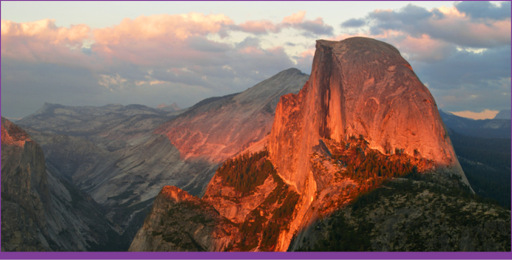
Half Dome at sunset Shutterstock
I have seen persons of emotional temperament stand with tearful eyes, spellbound and dumb with awe, as they got their first view of the Valley from Inspiration Point, overwhelmed in the sudden presence of the unspeakable, stupendous grandeur. Galen Clark
Times have changed, but the scenery remains the same. The first sight of the valley still possesses the power to leave guests weak in the knees and with a tear in their eye. These very sites were the catalyst fueling the conservation movement. The smooth granite peaks inspired a man, by his own admission an unknown nobody, to become one of Americas great naturalist writers, thinkers, speakers, and the unofficial father of the National Parks. Giant sequoias encouraged one of the countrys greatest presidents to protect similar exhaustible resources and landscapes. Beautiful vistas motivated a photographer to capture their essence, their unspeakable, stupendous grandeur, allowing the world to experience the spellbinding awe felt when a visitor first views the valley from Inspiration Point or Tunnel View.
The first non-Native visitors to this majestic valley didnt come for respite or rejuvenation. In 1851, the Mariposa Battalion was called to the Sierra Nevada to settle a skirmish between Native Americans and local 49ers hoping to dispossess their land. These soldiers found the Natives, whom they believed to be the Yosemite Tribe, in a valley about one mile wide and eight miles long. Upon arrival, the battalion didnt stop to stare in bewilderment or give thanks to a greater power capable of creating such a spectacle, instead they prepared to burn it down, thus starving the Natives. Eventually the feud was settled and it was learned that the natives were known as Ahwahneechee; Yosemite was actually their name for the Mariposa Battalion.
If no man ever feels his utter insignificance at any time, it is when looking upon such a scene of appalling grandeur. James Mason Hutchings
James Mason Hutchings and Galen Clark shared similar sentiments when it came to Yosemite Valley. In 1855, Hutchings was led into the valley by Natives. He quickly became enamored with the scenery and wasted no time moving in. In his opinion, the region had value as a tourist attraction, so he immediately began promoting it as such. From 1855 1864, the valley was visited by just 653 tourists. Insufficient infrastructure resulted in trips from San Francisco to Yosemite Valley that took 4 5 days (on foot, horseback, and carriage).
Galen Clarks wife died young, so he too moved to California seeking his fortune. In 1853, Clark contracted a severe lung infection. Doctors gave him six months to live. I went to the mountains to take my chances of dying or growing better, which I thought were about even (Galen Clark, 1856). Shortly after his arrival he discovered Mariposa Grove , and from that point on much of his time was spent writing friends and Congress requesting passage of legislation to protect the area. He gained the support of John Conness, a Senator from California. In 1864, in the midst of the Civil War, President Abraham Lincoln signed a bill preserving Yosemite Valley and Mariposa Grove under state control. Clark happily became guardian of the Yosemite Grant, including the grove of trees that inspired him. As guardian he was expected to protect the park from overeager tourists, maintain roads and bridges, and deal with residents and businesses residing here. All this needed to be done on a meager $500 annual budget.
One business in the valley was Hutchings House Hotel. James Mason Hutchings became Galen Clarks biggest pest. He refused to abide by the $1/year government lease. Essentially squatting on public land, he expanded his operations and built a sawmill.
Hutchings hired a wandering shepherd by the name of John Muir to run his sawmill. Born in Scotland, raised in Wisconsin, Muir skedaddled to Canada to avoid the Civil War and returned to work as an industrial engineer in Indiana. The sharp mind that had allowed memorization of the Bibles New Testament and most of the Old Testament by age 11 was on display in an industrial environment. His inventiveness and intellect helped improve many machines and processes, making life easier for the laborers at a plant manufacturing carriage parts. When a work accident nearly left him blind, Muir chose to be true to himself. He had always wanted to study plants and explore the wilderness. He set out on a 1,000 mile walk from Indiana to Florida, where he planned to board a ship to South America. Unfortunately, he contracted malaria before he could set sail across the Caribbean. While recuperating in Florida, he read about Yosemite and the Sierra Nevada. Nursed back to health, Muir booked passage to California instead. He arrived in 1868. After a brief stint as a shepherd, Muir moved into Yosemite Valley to run Hutchings sawmill, where he built a cabin near the base of Yosemite Falls for $3, what he considered to be the handsomest building in the valley.
Next page
